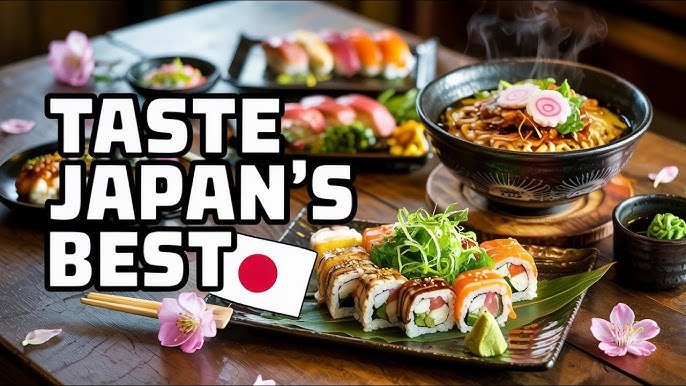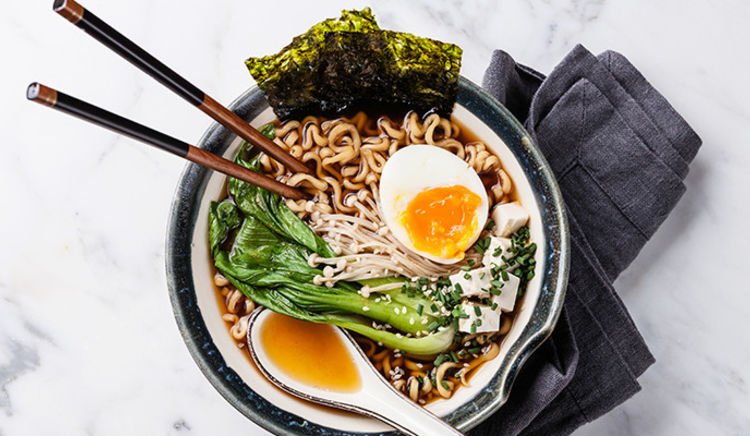
Japan’s culinary scene is a flavorful journey through centuries of culture, precision, and seasonal ingredients. Whether you're a curious foodie or a language learner seeking deeper cultural immersion, exploring Japanese dishes is a delicious way to connect with the language. These iconic foods not only introduce you to authentic flavors but also expose you to vocabulary and customs that enrich your understanding of Japan.
Studying Japanese goes far beyond grammar and kanji—it’s about engaging with the culture. One of the most immersive ways to do that? Dive into Japanese cuisine. From street snacks to traditional meals, these Japanese dishes reflect the nation’s regional diversity, history, and aesthetics. Below are ten must-try options that serve both your palate and your passion for learning.
A global favorite, sushi is a delicate combination of vinegared rice, fresh seafood, and vegetables. From nigiri (hand-pressed sushi with a topping of fish) to maki rolls (seaweed-wrapped rice and fillings), sushi showcases Japan's coastal abundance. The balance of flavors and textures makes each bite a unique experience. Whether enjoyed at a high-end sushi restaurant or a conveyor-belt sushi shop, the freshness and precision of sushi-making remain unparalleled.

Tempura is a dish of lightly battered and deep-fried seafood or vegetables, known for its crisp, golden texture. Originating from Portuguese influences in the 16th century, Japanese tempura has evolved into a refined delicacy. Typically served with a dipping sauce called tentsuyu (a blend of dashi, soy sauce, and mirin), tempura offers a delightful contrast of crunch and umami. Common varieties include shrimp, sweet potato, and eggplant tempura.
The differences between the Tokyo dialect and western Japan are more than just accent — check out our Kansai-ben vs Standard Japanese guide to explore the contrast.
Ramen is a soul-warming noodle soup enjoyed throughout Japan, with regional variations offering distinct flavors. Tokyo-style ramen features a soy sauce-based broth, while Hokkaido’s miso ramen is rich and hearty. Fukuoka’s tonkotsu ramen, made with a creamy pork bone broth, is another popular variety. Each bowl typically includes chashu (braised pork), menma (fermented bamboo shoots), green onions, and a soft-boiled egg, making ramen a deeply satisfying meal.

Okonomiyaki, often referred to as a Japanese savory pancake, is a dish where ingredients such as cabbage, pork, seafood, and cheese are mixed into a batter and grilled on a hot plate. The name means "grilled as you like it," reflecting the variety of ingredients that can be used. The pancake is typically topped with a special okonomiyaki sauce, mayonnaise, bonito flakes, and dried seaweed. Popular in Osaka and Hiroshima, okonomiyaki is a fun, interactive dish that can be enjoyed in specialty restaurants where diners cook it themselves.
Takoyaki are bite-sized, ball-shaped snacks made from a wheat-based batter filled with diced octopus, tempura scraps, green onions, and pickled ginger. Cooked in special molded pans, they are turned frequently to achieve a crispy exterior while remaining soft inside. Takoyaki is usually topped with a savory sauce, mayonnaise, and bonito flakes that appear to "dance" due to the heat. Originating from Osaka, these delicious street food treats are a must-try for any visitor.
One fun and effective way to improve your vocabulary is to read Japanese manga for language learning, which helps you grasp everyday expressions naturally.
Soba and udon are two traditional Japanese noodle dishes with distinct characteristics. Soba, made from buckwheat flour, has a slightly nutty flavor and is often served either cold with a dipping sauce (zarusoba) or hot in a flavorful broth. Udon, made from wheat flour, is thicker and has a chewy texture. Popular udon varieties include kitsune udon (topped with sweet fried tofu) and curry udon (served in a rich curry-based broth). Both noodles are enjoyed year-round and offer a taste of Japan’s culinary simplicity and elegance.
Tonkatsu is a breaded and deep-fried pork cutlet, typically served with shredded cabbage and a tangy, slightly sweet tonkatsu sauce. It is believed to have been inspired by European-style cutlets but has been adapted into a uniquely Japanese dish. Tonkatsu is often accompanied by miso soup and rice, making it a well-rounded and satisfying meal. Variations include katsu curry (tonkatsu served with Japanese curry) and katsudon (tonkatsu served over rice with egg and sauce).
Yakitori consists of skewered and grilled chicken pieces, seasoned either with salt (shio) or a savory-sweet soy-based sauce (tare). Different parts of the chicken, including thigh, breast, liver, and even cartilage, are used to create a variety of flavors and textures. Yakitori is commonly enjoyed in izakayas (Japanese pubs) as a snack with beer or sake. Its smoky, juicy flavors make it an irresistible dish for both locals and visitors.
To improve your speaking skills, it’s important to understand common mistakes in Japanese pronunciation and how to avoid them.
Unagi, or freshwater eel, is a prized delicacy in Japan. The eel is typically grilled over charcoal and glazed with a sweet-savory tare sauce before being served over rice (unadon). Unagi is considered an energy-boosting food, particularly popular during the summer months. Due to its rich flavor and tender texture, unagi is often featured in high-end Japanese cuisine. Specialty restaurants dedicated to unagi preparation can be found throughout Japan.
Miso soup is a cornerstone of Japanese meals, made from a base of dashi broth and miso paste (fermented soybean paste). Depending on the region and household, it may include tofu, seaweed, green onions, mushrooms, or clams. The soup is known for its deep umami taste and nutritional benefits, as miso is rich in probiotics. It is commonly served as a side dish with rice and pickles, making it a comforting and essential part of Japanese cuisine.
Japan’s culinary world is vast and deeply rooted in history. Whether you’re dining in a Michelin-starred restaurant or grabbing street food in Osaka, each dish tells a story of craftsmanship and culture. Which of these have you tried? Let us know your favorites!
Japanese dishes are not merely food—they are stories told through flavor, history, and tradition. Each bite of sushi reflects the art of precision, each bowl of ramen whispers the tale of regional identity, and each serving of okonomiyaki or takoyaki brings the streets of Osaka alive on your palate. When you explore Japanese cuisine, you're not just eating—you’re engaging with centuries of craftsmanship, social customs, and linguistic nuances.
For language learners, immersing yourself in the world of Japanese dishes is one of the most enriching and delicious ways to reinforce vocabulary, kanji recognition, and cultural understanding. Recognizing menu items, reading food labels, and even understanding restaurant etiquette offers authentic language exposure that textbooks alone cannot provide.
Whether you're savoring a comforting bowl of miso soup at home or navigating a bustling izakaya in Tokyo, remember: every meal is an opportunity to deepen your connection to Japan. So, as you embark on your journey to learn the language, let the vibrant and diverse world of Japanese dishes be your flavorful guide—one plate, one word, and one cultural discovery at a time.
Building a strong foundation is essential, so start by learning essential Japanese words for beginners to boost your vocabulary quickly.